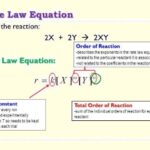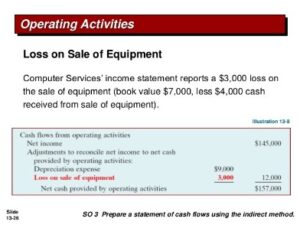
The accounting for a manufacturing business deals with inventory valuation and the cost of goods what is the gaap matching principle sold. These concepts are uncommon in other types of entities, or are handled at a more simplified level. Calculating TMC is imperative for gaining insights into the financial health of a manufacturing business and making the operation more cost-effective.
This costing method is similar to job costing, however, it calculates item costs by adding together the direct costs and overheads per processing step of a product’s lifecycle, rather than per individual item or job. This makes it a favorable costing method for process manufacturers and other companies that otherwise produce large numbers of identical units. Effective inventory management not only minimizes disbursement but also enhances operational efficiency and increases profitability. Manufacturing accounting systems offer valuable visibility into key aspects of inventory management, encompassing goods acquisition, stock valuation, and the calculation of moving average costs (MAC).
Best Accounting Software for New Manufacturing Businesses
The process also grows progressively more complex as your operation grows in size and may call for better and more efficient costing and accounting methods to ensure you’re running a sustainable business. This is a costing method that differs from job costing in that it incorporates more indirect costs, such as resource consumption. It can help you hone which products are profitable and spot opportunities to drive better results for your existing products. Your manufacturing business is as creative and unique as you are, so it goes without saying your accounting software should be too. Manufacturers will often seek out a modularized all-in-one solution, where every facet of the business, such as inventory, tracking, production, and planning, are combined into one system.
With robust reporting features, you gain valuable insights into your operations and identify areas for improvement. You might find all these features – or rather, all the ones you need – in a single system. But in many cases, single-vendor software that offers near-unlimited features can be overwhelming or inefficient. Manufacturing accountants also keep an eye on other important areas of expenditure to ensure the budget is followed throughout the financial year.
- An accounting software or service can help you avoid costly mistakes and get a clear picture of your overall finances.
- However, specific identification is usually only possible for manufacturing businesses that produce a low volume of differentiated products.
- ABC is a very accurate costing methodology that helps to factor indirect costs into unit pricing.
- There are various costing methods that each inform cost accounting in their own way.
Cost of goods sold
This ensures the business stays on track by assigning the appropriate sales prices for the products. Budgeting processes in factories and other industries rely considerably on historical data and production expenses to help managers make an informed estimate for future budgets. provision for bad debts journal entry Variable costs change depending on the number of units your manufacturing firm produces. Direct labor includes the cost of workers who transform raw materials into finished goods. The wages of the worker who assembles the tables are direct labor, but not the salary of the janitor who keeps your factory clean. Direct materials refer to the raw materials that manufacturers transform into finished products.
To Ensure One Vote Per Person, Please Include the Following Info

Accounting for manufacturing overhead costs requires more effort, and can be more challenging compared to other costing efforts because of the difficulty in assigning them to specific products or outcomes. In addition, there are also indirect costs that must be managed within a manufacturing business, such as insurance premiums and daily office expenses. When tracking manufacturing expenditure, it’s important to understand both direct and indirect costs. Assume that finished goods are transferred from the factory to the warehouse at production cost plus a 10% manufacturing profit. Some manufacturing companies prefer to transfer finished goods from the factory to the warehouse at an increased price, by adding a pre-set margin (called the manufacturing profit) to the what is a bank statement production cost.
Manufacturing accounting involves tracking the cost of goods sold, production costs, the efficiency of the manufacturing process, and the margin of profit. These details enable the production managers to attune production practices to ensure the business remains efficient in production and saves costs while maximizing returns from sales. A relevant exception is inventory valuation which generally needs to conform to local jurisdictions for taxing purposes. Manufacturing companies often use data from the manufacturing accounting process to compile compliant financial reports. Capable inventory management and MRP software systems also automatically compile manufacturing accounting data into readily usable reports. The best accounting software for manufacturing businesses will also integrate with other software you use, such as your ERP software, CRM systems, or other modules that speak to inventory management and production.
If nothing else, it’ll help you analyze your financial statements and reports to improve the efficiency of your business. In summary, the accounting for manufacturing businesses is much more detailed than is required for a business that maintains no inventory. The software should have the ability to generate financial reports and provide insightful analysis of production performance. You need accurate financials to correctly forecast cash flow and ensure you’re paying the right amount of taxes. And the efficiency with which you perform accounting for manufacturing directly impacts your bottom line.
